Elegant German Natural Baltic Amber beads rare necklace in cloudy egg yolk and w
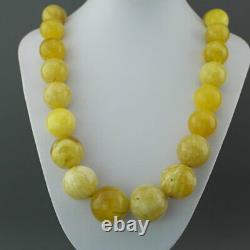
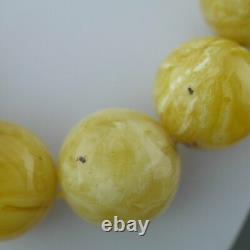
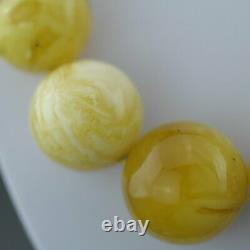

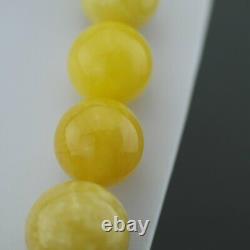
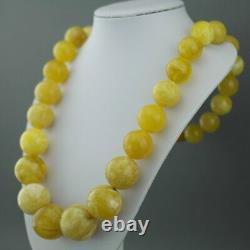
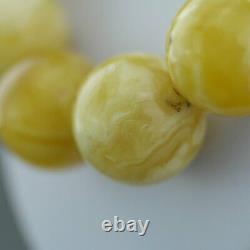
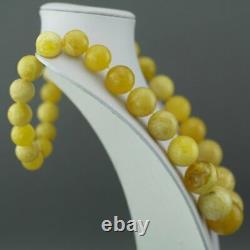
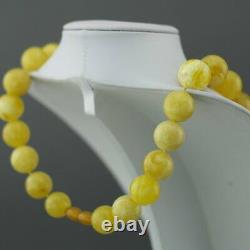
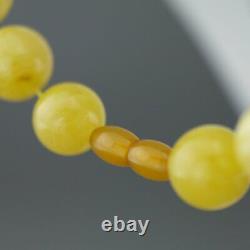

Stunning and very rare German huge genuine natural Amber beads necklace Necklace weight 227g Smallest bead diameter approximately 18 mm Biggest bead diameter approximately 31 mm Each bead round in shape carved from genuine one peace Amber stone Necklace length 30.5 inches / 780 mm Birmingham Assay Jewellery Assessment (date: 19-09-2016) Condition: New. Story: This Amber Necklace comes from Amber Heart of the Word, post-Prussian Amber Factory - in Yantarny, Russian Federation. Yantarny, previously known in German as Palmnicken. Palmnicken was founded in 1234 by the Teutonic Knights during the Northern Crusades, on the site of a previous Old Prussian settlement. After the secularization of the Teutonic Knights' Prussian lands in 1525, Palmnicken became part of the Duchy of Prussia. Kaliningrad Amber Factory was established on July 21, 1947. It is operating on the basis of the largest in the world amber deposit located on the Baltic seacoast near the village of Yantarny. Amber origin The first scientist who set out to prove that amber is fossilized resin of trees was the Roman writer Plinius the Senior. He noticed the resin smell and the smoky flame that were coming out when the amber was burning.
He also noticed that one could find solidified insects and parts of plants in the transparent amber. Later the German scientists tried to dispute this conclusion. Thus, for example, a well-known naturalist George Agricola (16th century) proved that amber was formed in the interior of the Earth from liquid bituminous matter that fossilized when flowing out onto the Earths surface. In the early 18th century some scientists claimed that amber originated when oil combined with mineral acids. Amber was well known in Ancient Russia.
It was called alatyr or latyr-stone and it was ascribed miraculous powers. Lomonosov in his work «The first basics of the mining science» (1742) and «On the origin of metals as a result of an earthquake» (1757) gave new arguments in favour of organic amber origin. It is generally recognized today that the Baltic amber (whose international mineralogical name is succinite) is the fossilized resin of trees, mainly coniferous ones, that grew on the vast territory of the southern part of the Northland and bordering areas of the modern Baltic sea. Approximately 45-50 ml years ago the climate grew considerably warmer and more humid than favoured rich vegetation.
Bay-trees and Eugenia trees, as well as palm trees and lianas, were widely spread along with deciduous lime-trees, maples, oaks and chestnuts. Climate change brought about abundant resin flowing.The resin was oxidized by the air, it was covered with thick dark brown crust and in this state, it accumulated in the soil of «the amber forest». The rivers and brooks gradually washed out hardened clods of resin from the ground and carried them into the estuary of a big river that flew into an ancient sea on the area of the modern Kaliningrad peninsula. This is how the largest in the world Palmniken amber deposit formed. Approximately two million years ago a huge glacier shifted the Earths layers including the amber-carrying deposits of the Eocene period to the bottom of the Carpathian mountains, that resulted in the formation of the secondary (quaternary) amber deposits.
At present amber is found on the whole of the vast area that used to be covered by the glacier. The item "Elegant German Natural Baltic Amber beads rare necklace in cloudy egg yolk and w" is in sale since Tuesday, October 13, 2020. This item is in the category "Jewellery & Watches\Fine Jewellery\Fine Necklaces & Pendants\Gemstone".antiques" and is located in Chesterfield. This item can be shipped worldwide.
- Shape: Bead
- Colour: White
- Brand: Zolotareff
- Main Stone: Amber
- Main Stone Colour: Yellow
- Theme: Beauty
- Metal: No Metal
- Secondary Stone: Amber
- Length: 30 - 35"
- Style: Beaded
- Main Stone Shape: Round
- Main Stone Creation: Natural
- Natural/Lab-Created: Natural

